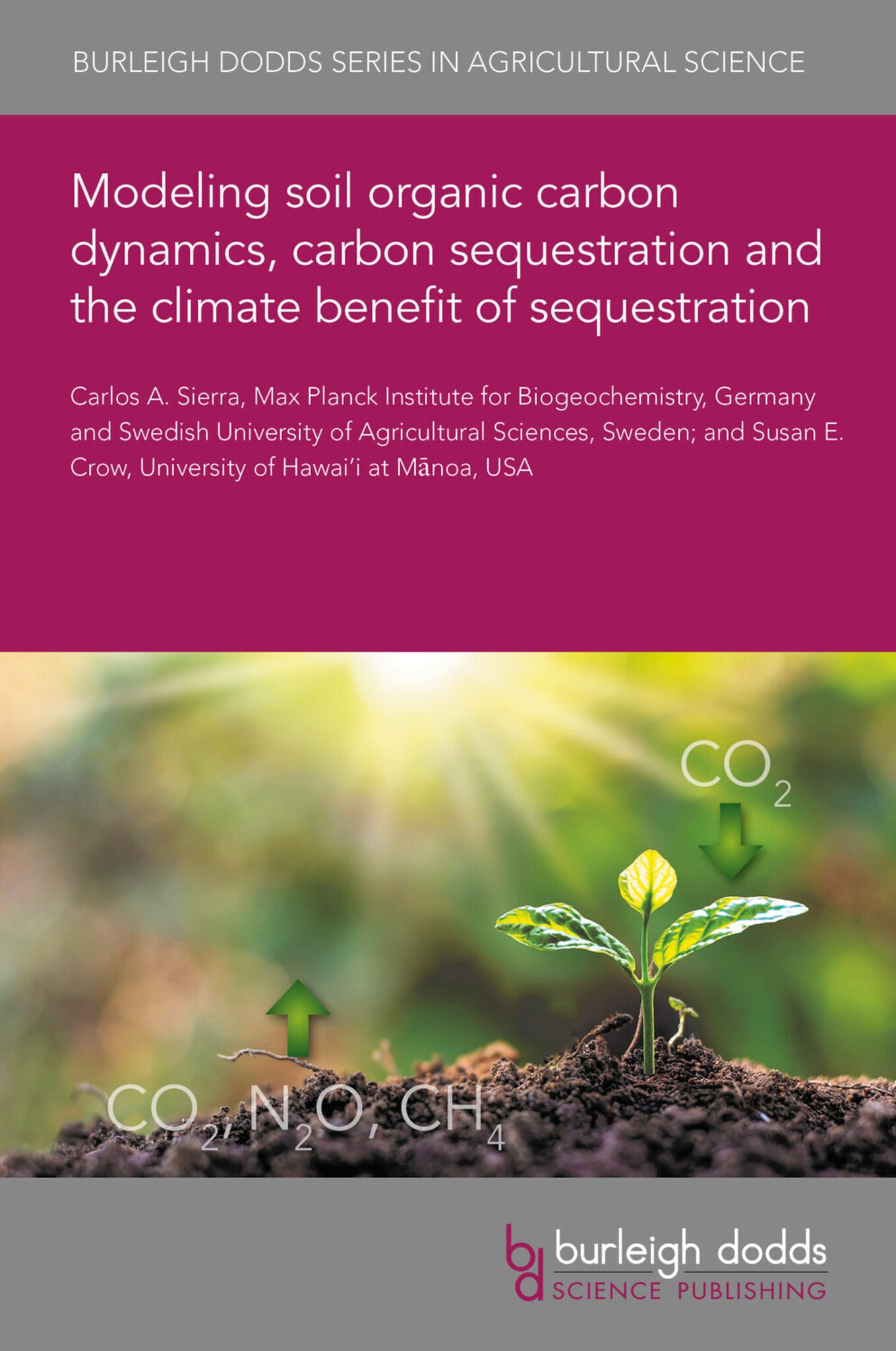We're sorry. An error has occurred
Please cancel or retry.
Modeling soil organic carbon dynamics, carbon sequestration and the climate benefit of sequestration
Regular price
£25.00
Sale price
£25.00
Regular price
£0.00
Unit price
/
per
Sale
Sold out
Re-stocking soon
Mathematical models are essential for integrating different processes that control rates of soil carbon dynamics and for assessing carbon sequestration and the related climate benefits. Many models...
Read More

Some error occured while loading the Quick View. Please close the Quick View and try reloading the page.
Couldn't load pickup availability
- Format:
-
07 November 2022

Mathematical models are essential for integrating different processes that control rates of soil carbon dynamics and for assessing carbon sequestration and the related climate benefits. Many models have been proposed in the literature, with no overall consensus on the best model that can provide relevant insights at a large range of scales and for multiple questions. This chapter reviews general groups of models with their expected ranges of application. It also reviews recent advances in using models of any level of detail to compute carbon sequestration, and the climate benefit of carbon sequestration. Using agricultural soils from Sweden and Hawai'i as examples, the chapter shows that new carbon inputs to the soil do not remain for long timescales, and only small proportions are stabilized. Although soils are a promising reservoir to store carbon, long timescales are required to store amounts of carbon of relevance to mitigate climate change.

Price: £25.00
Publisher: Burleigh Dodds Science Publishing
Imprint: Burleigh Dodds Science Publishing
Series: Burleigh Dodds Series in Agricultural Science
Publication Date:
07 November 2022
ISBN: 9781801467087
Format: eBook
BISACs:
TECHNOLOGY & ENGINEERING / Agriculture / Agronomy / Soil Science, Soil science and management, TECHNOLOGY & ENGINEERING / Agriculture / Agronomy / Crop Science, TECHNOLOGY & ENGINEERING / Agriculture / Sustainable Agriculture, Agronomy and crop production, Sustainable agriculture

1 Introduction 2 Modeling soil organic carbon dynamics 3 Families of models 4 Metrics to analyze models in the context of carbon sequestration for climate change mitigation 5 Discussion 6 Conclusion 7 Where to look for further information 8 References



